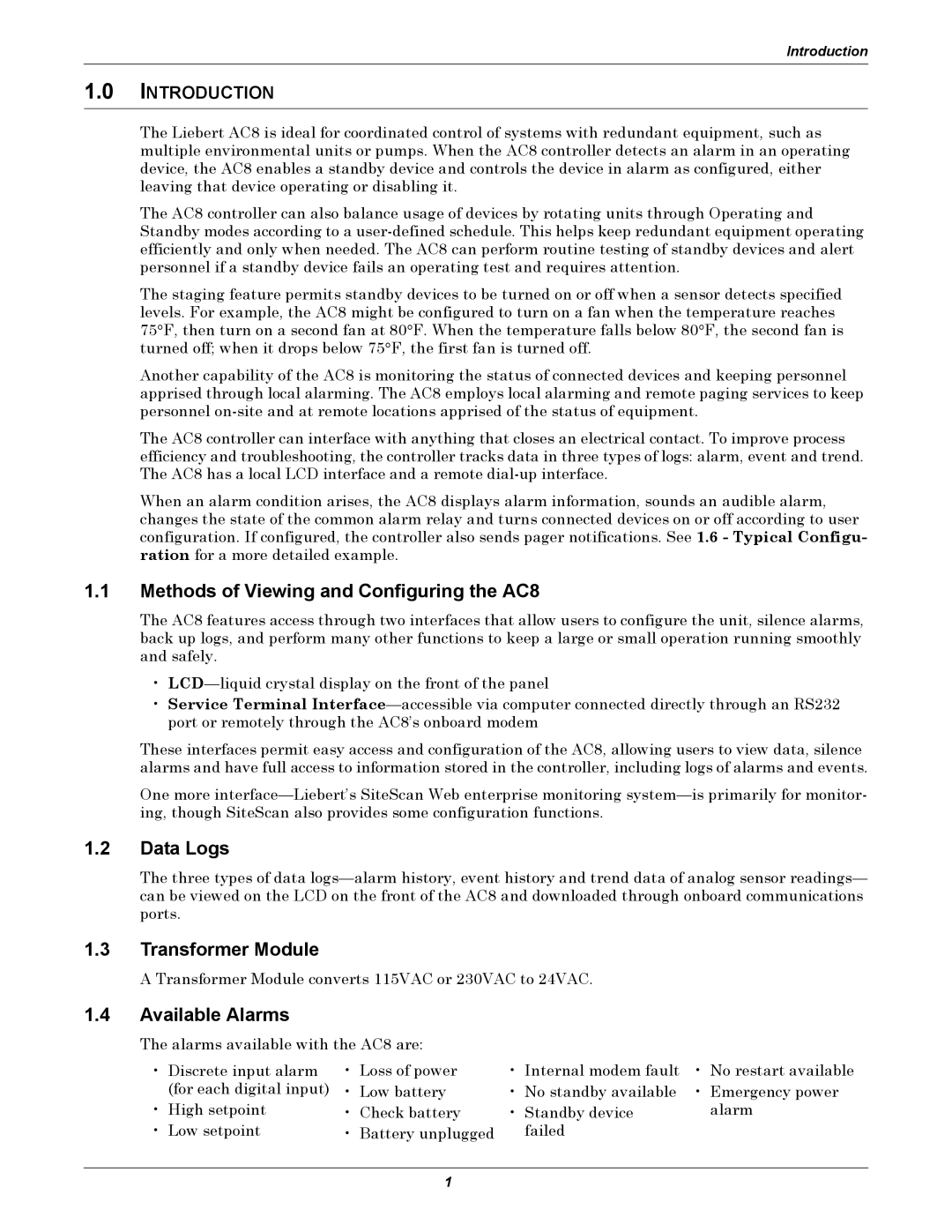
Introduction
1.0INTRODUCTION
The Liebert AC8 is ideal for coordinated control of systems with redundant equipment, such as multiple environmental units or pumps. When the AC8 controller detects an alarm in an operating device, the AC8 enables a standby device and controls the device in alarm as configured, either leaving that device operating or disabling it.
The AC8 controller can also balance usage of devices by rotating units through Operating and Standby modes according to a
The staging feature permits standby devices to be turned on or off when a sensor detects specified levels. For example, the AC8 might be configured to turn on a fan when the temperature reaches 75°F, then turn on a second fan at 80°F. When the temperature falls below 80°F, the second fan is turned off; when it drops below 75°F, the first fan is turned off.
Another capability of the AC8 is monitoring the status of connected devices and keeping personnel apprised through local alarming. The AC8 employs local alarming and remote paging services to keep personnel
The AC8 controller can interface with anything that closes an electrical contact. To improve process efficiency and troubleshooting, the controller tracks data in three types of logs: alarm, event and trend. The AC8 has a local LCD interface and a remote
When an alarm condition arises, the AC8 displays alarm information, sounds an audible alarm, changes the state of the common alarm relay and turns connected devices on or off according to user configuration. If configured, the controller also sends pager notifications. See 1.6 - Typical Configu- ration for a more detailed example.
1.1Methods of Viewing and Configuring the AC8
The AC8 features access through two interfaces that allow users to configure the unit, silence alarms, back up logs, and perform many other functions to keep a large or small operation running smoothly and safely.
•
•Service Terminal
These interfaces permit easy access and configuration of the AC8, allowing users to view data, silence alarms and have full access to information stored in the controller, including logs of alarms and events.
One more
1.2Data Logs
The three types of data
1.3Transformer Module
A Transformer Module converts 115VAC or 230VAC to 24VAC.
1.4Available Alarms
The alarms available with the AC8 are:
• Discrete input alarm | • Loss of power | • Internal modem fault | • | No restart available |
(for each digital input) | • Low battery | • No standby available | • Emergency power | |
• High setpoint | • Check battery | • Standby device |
| alarm |
• Low setpoint | • Battery unplugged | failed |
|
|
1
